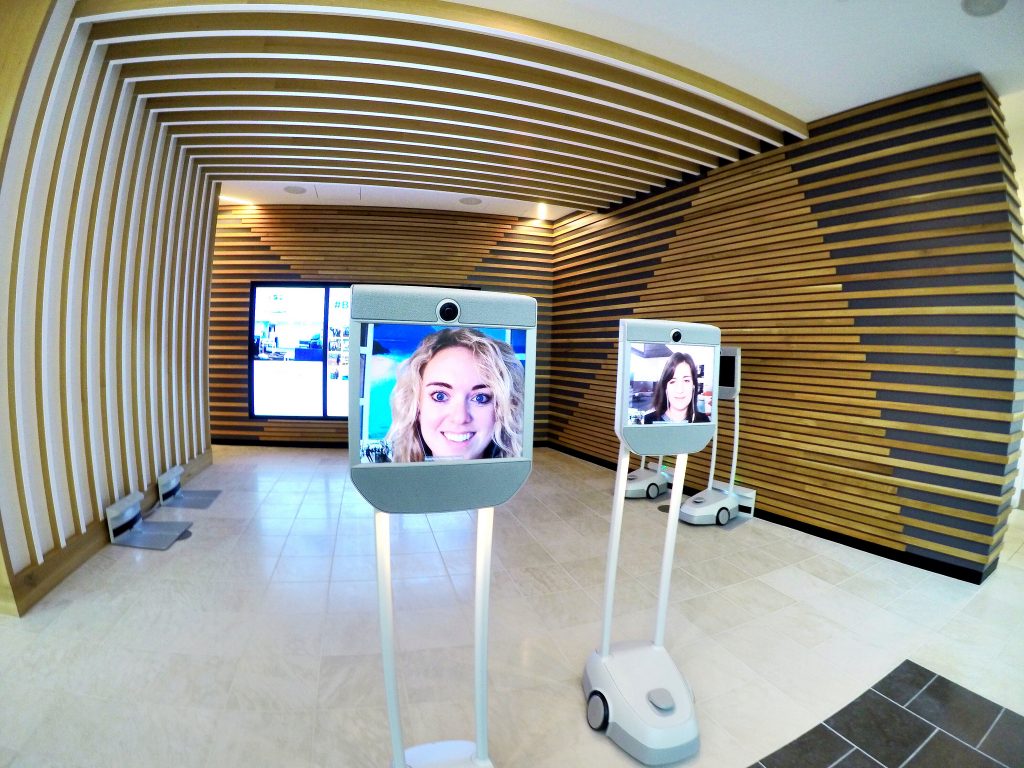A recent workplace survey by Gallup highlighted that in 2016, 57 percent of employees working with computers or in IT spent at least some time working remotely. In general, the idea of remote work has found a lot of favors among IT and IT enabled services companies. It helps them overcome geographic constraints in hiring people, reduce the expense of rented or owned workspaces, and ensures people are available at a few-minutes’ notice should their services be needed outside work hours. Another factor that’s heavily influencing progress in remote work is that employees want it, which means companies have to wrap their heads around this idea. Technology helps, like always.
Meeting schedulers
The email tennis volleys that erupt when someone arranges a teleconference meeting with requests for rescheduling are well known and highly feared in corporate environments. This wastes time. When people aren’t available for real face-to-face meetings, teleconferences will increase. Remote work just can’t be held hostage to several rounds of meeting rescheduling requests.
Interestingly, there are scheduling tools available that can sync up with the calendars of all people and propose suitable meeting times in a jiffy. These schedulers are available as parts of extended project management suites, dedicated software, and even AI-powered solutions (such as “Amy” and “Andrew” from X.AI). The value that these schedulers bring is immense, totally eliminating the wastage of time in finding suitable teleconference meeting time-slots involving several people working across several time zones.
Communication suites

Communication, of course, is the key to success with remote work. Communication suites make it easier. Slack, for instance, has become a staple at offices with several teams, several tools, several offices, and several clients. The key benefit of such all-inclusive communication tools is that they bring together all communication channels to a single interface — instant messaging, email, teleconferences, video conferencing, and more. More importantly, because the entire workforce uses a single communication suite, all information is neatly stored with tags and identifiers and is easily searchable. This means that the communication suite soon becomes the knowledge hub that people can connect to get quick answers to queries about teams, processes, and tools.
Document management suites
Central file hosting and document management can improve employee productivity tenfold. With easy access to all relevant documents, in neatly organized folders, via a web interface, your remote workers will never have to struggle for information when they need is at the click of a button. For teams that need to work with vendors, customers, and internal partners, these central repositories are a godsend, saving dozens of hours each month.
Modern cloud-based document management systems are intuitive to use, and hence remote workers can begin benefitting from them without the need for any training. With strong access control features such as password protection, short-lived links, and “limited rights of accessing/editing” information, leaders can control to ensure nobody accesses the information they’re not authorized for. Real-time sync means that employees can continue from where they left, accessing their work files from different devices.
Web-based helpdesk

When people aren’t sitting close to each other, nobody knows what the other one is up to! The problem, leaders fail to comprehend as to who has enough time to work on new projects. Web-based helpdesk tools offer a solution to this problem. These tools can help managers treat each team as the equivalent of a helpdesk and create numbered requests for new work (called tickets). These work requests can be tagged with all the necessary information, right from their priority to the time they’re likely to consume. This methodology helps managers get quick visibility of the work being done by remote workers, the updates logged by them in a day, and the current status of all the work requests assigned to them.
Project management tools
Though project management solutions are not exclusively targeted at teams where a major chunk of the work is done remotely, it has clear benefits to offer there too. These tools are built to help teams accomplish tasks in a timely manner and meet deadlines without problems. Task management and activity tracking are the two pillars of any project management software. Built-in to-do lists, commenting, calendars, and chats make these tools all the more potent. Gantt charts and reporting features are also available in advanced project management tools, which help managers take stock of progress quickly, and take necessary actions if deliverables go off track.
Performance analysis, feedback, and management

Performance appraisal is a tough nut to crack, even today, and even for large enterprises. One-time annual reviews, when done within strict time schedules, often leave managers as well as employees too flustered to take a step back and bring in objectivity into interactions. When most of your team is working remotely, it becomes all the more difficult for managers to evaluate employee performance. This is where employee evaluation software can offer fabulous support to managers. This software works on the principle of continuous feedback. Anybody can participate in the feedback, which enables 360 degrees feedback, even when there’s minimal face to face interaction between people. Such tools also help managers suggest appropriate training programs for employees, helping them grow in their careers.
Employee engagement tools
Just like performance management tools, employee engagement tools being in the power of automation, workflows, and continuous interactions to overcome the vacuum created between people and leaders because of the lack of face to face communication. These tools work by gathering well timed and continuous feedback from individuals to measure how well-engaged they find themselves with their work, team, and leaders. Because these tools enable continuous feedback, managers can use the insight to prevent attrition and to ensure employee satisfaction even when there’s no clear complaint or grievance raised by an individual.
Remote work: A productivity booster
Remote work has been proven to contribute positively towards fostering creativity and productivity, promoting employee retention, cutting costs, and increasing diversity in the workplace. By adopting technology solutions to make remote work easier to manage, companies can take their workforce’s effectiveness to the next level.
Featured image: Shutterstock




This is a great list! You might also consider using a digital workspace, in which people can integrate basically all the tools you’ve mentioned and combine them in one browser based workspace. This means that they can access their information, applications, etcetera, from anywhere. This is fantastic if you’re dealing with remote, flexible or mobile employees. Some great options are Best Place to Work, Workspace 365 or Cloud 1 Workspace.
Thank you for your generous and info-rich comment Georgien.
Remote apps, I totally agree, are right up there in terms of technology that makes remote work seamless. And aggregating all of them under a single interface, well yeah, nothing like it. I have worked on some projects where we used Citrix products for this, and your comment has helped me appreciate why that was an enabler.
Thanks
Project management tools definitely help a lot. I like the ones based on the Kanban method, especially https://kanbantool.com/ . It’s easy to use and efficient. I just look at the board and know immediately what I need to do, I don’t need to waste time to figure out what my next step should be.
Hello
Thanks for your comment, Samantha.
I recall Kanban from a quality management course I took a few years back.
My methodology for choosing project management tools is to go for ones that offer many functions within a single interface than go for several tools that specialize in specific methods.
That aside, thanks for the suggestion.
It’s such a great article! One of the important thing in remote thing is to mange Time, Time management is definitely very important when you want to stay productive and efficient. I’m not the best at it, so I use time management tools to help me out. The best one I’ve tried so far is Time monitoring app .It’s easy to use and my performance got a lot better thanks to it.
Yes, these tools are really effective. I recommend every organization should provide remote working to their employees so they can work from anywhere without any trouble of getting in the office.